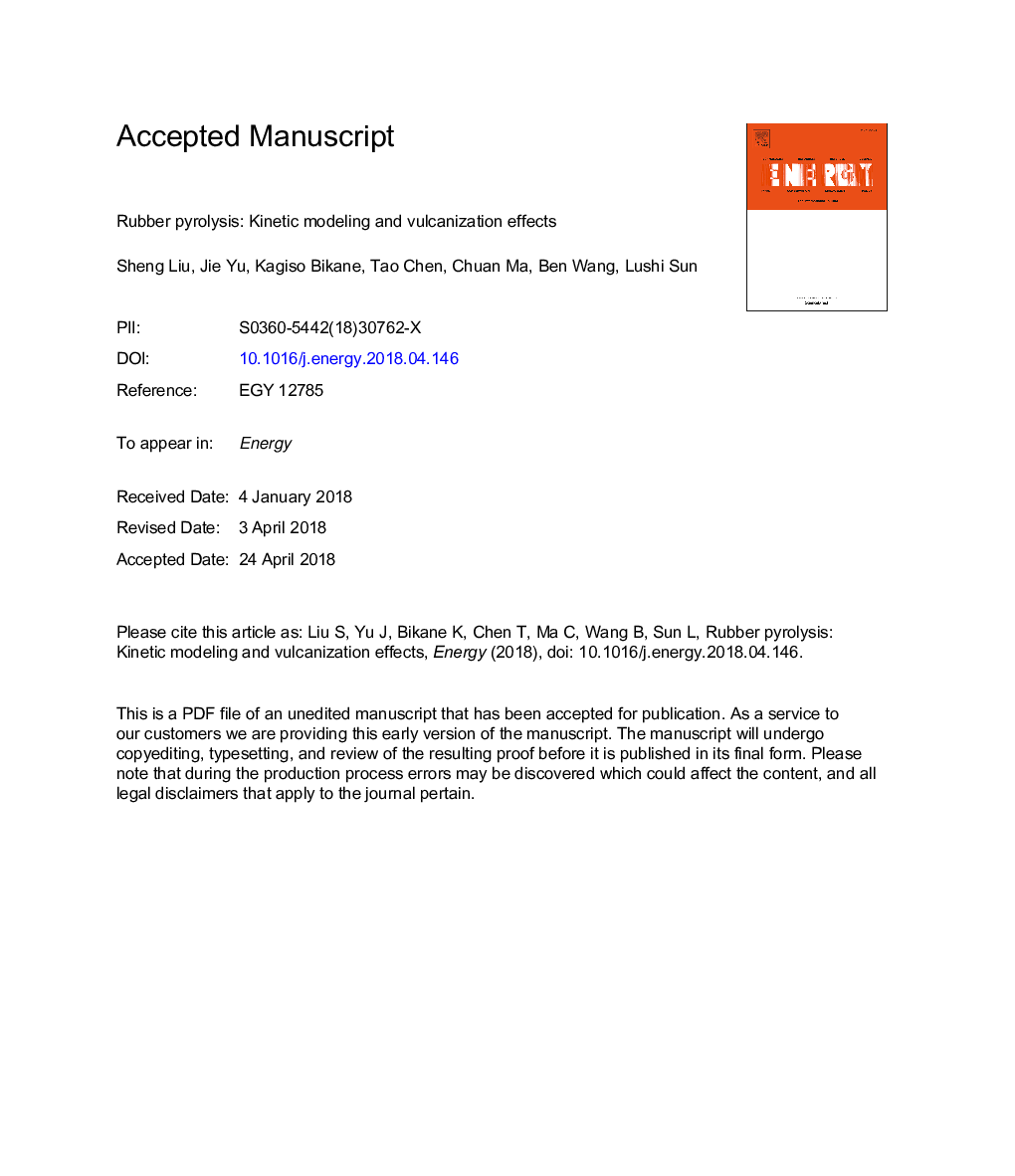| Article ID | Journal | Published Year | Pages | File Type |
|---|---|---|---|---|
| 8071408 | Energy | 2018 | 33 Pages |
Abstract
Kinetic studies and the effect of the vulcanization process on the pyrolysis of natural rubber (NR), butadiene rubber (BR) and styrene-butadiene rubber (SBR) were investigated in this work. A comprehensive kinetic study using a model-based method, a model-free method and the distribution activation energy model (DAEM) was applied and a comparison between the different models was drawn. The DAEM showed a better fitting of the experimental results than the model-based method. The activation energy distribution of the DAEM verified by the model-free method indicated that the main decomposition of rubbers followed a chain reaction mechanism. Pyrolysis of raw rubbers and their corresponding vulcanized rubbers were conducted in a fixed-bed reactor. The sulfur content and product yields were quantified. Pyrolysis oils were characterized and compared. The oil yields reached a maximum at 430â¯Â°C for NR (90.82%), 470â¯Â°C for both BR (90.61%) and SBR (92.80%). Pyrolytic oils of raw rubbers were mainly composed of their corresponding monomer or dimer, trimer compounds. However, the results of vulcanized rubbers pyrolysis were significantly different. Sulfur in the vulcanized rubbers was released at low temperatures due to the lower bond energy. Higher temperatures led to the conversion of sulfur-containing oils to gaseous compounds. Vulcanization promoted the decomposition of rubbers at low temperatures but had an insignificant influence on pyrolysis products distribution at high temperature. Pyrolysis oils of vulcanized rubbers were more complex, constituting various aromatic hydrocarbons and thiophenes.
Related Topics
Physical Sciences and Engineering
Energy
Energy (General)
Authors
Sheng Liu, Jie Yu, Kagiso Bikane, Tao Chen, Chuan Ma, Ben Wang, Lushi Sun,
